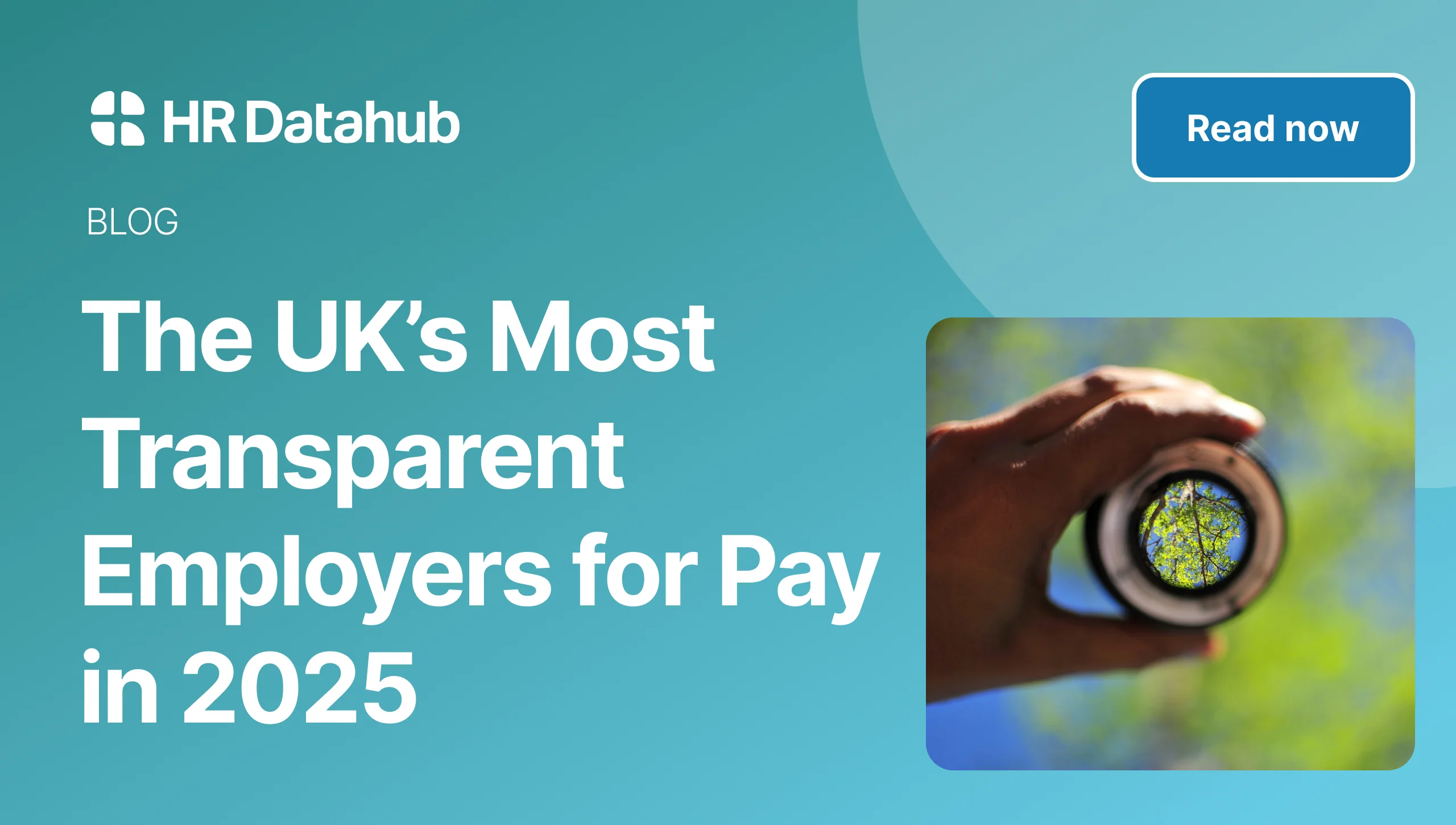

June 4, 2024
June 4, 2024
How to Start Preparing for Pay Transparency

Published by:
David Whitfield
,
CEO & Co-Founder
,
HR DataHub

Reviewed by:
Alexa Grellet
,
COO & Co-Founder
,
HR DataHub

4
MIN READ time
.avif)
Pay transparency is becoming a big deal in today's workplace. Companies of all sizes are expected to openly share their pay structures and strategies with employees and candidates. This shift is a huge step toward closing the gender pay gap and promoting a fairer workplace for everyone. But, let’s face it, it’s not without its challenges, especially for organisations with historical pay disparities.
In our recent webinar with experts David Whitfield, Alexa Grellet, and Rachel Gibbs, we explored tangible steps organisations can take to gear up for a more transparent future. Here are some key takeaways to help you get started.
Understanding the Impacts on Equity
First things first, it's crucial to understand how pay transparency will impact equity within your company and your broader business processes. Conducting a pay review to identify any existing disparities is essential. Ask critical questions about who is affected and why, ensuring that no employee groups are inadvertently disadvantaged.

Market Competitiveness and Benchmarking
Staying competitive in the market is a must. Benchmarking every role against the market helps ensure that your pay rates are on point. This proactive approach prevents scenarios where new hires earn significantly more than existing employees, which can create internal tensions and fairness issues.
At HR DataHub, we support HR and Reward professionals in making data-led compensation decisions. Our real-time salary benchmarking platform provides access to the UK’s most comprehensive salary database, giving you the data you need to make fair pay decisions with just a few clicks.
Securing Stakeholder Buy-In
Getting buy-in from stakeholders is crucial. Depending on your organisation’s size, this may involve presenting findings and proposed changes to senior leadership for approval. Building a concrete plan that addresses, communicates, and implements pay transparency strategies requires alignment across various departments, including legal, risk, and HR.
.jpeg)
Pilot Programs and Gradual Implementation
For large organisations, starting with a pilot program can be super effective. Test pay transparency in a specific region or among a particular group of employees to gather feedback and refine your strategies before a full-scale rollout. This controlled approach helps manage risks and ensures smoother implementation.
Transparency and Communication
Transparency isn’t just about sharing numbers; it’s about clear and open communication. Organisations need to explain their pay policies and the rationale behind them to build and maintain trust. This includes being upfront about how pay data is gathered and benchmarked. Transparency in sources and methods is key to building trust and credibility with employees.
.jpeg)
Managing Legacy Pay Disparities
One of the significant challenges in implementing pay transparency is managing legacy pay disparities. Existing employees might find themselves earning less than new hires due to historical pay practices. Address these disparities thoughtfully, which might involve gradual pay adjustments over time to align salaries more closely with market rates.
Measuring Success and Continuous Improvement
After implementation, it’s essential to measure the success of your pay transparency initiatives. Key performance indicators (KPIs) like time to hire, retention rates, and employee engagement scores can provide insights into the effectiveness of these changes. Regular reviews and adjustments ensure that your organisation continues to meet its equity and transparency goals.
The Role of Self-Reflection and Analysis
A significant part of this process involves self-reflection and continuous analysis. Regularly question your pay strategies and the consequences of your decisions. This introspection is crucial for maintaining a fair and equitable pay system both during and after implementation.
External Communication and Brand Impact
Pay transparency also offers a great opportunity to enhance your company’s external brand. Publicly sharing pay policies and results of pay gap analyses can position your organisation as a leader in equity and transparency, attracting top talent and strengthening your market position.
Final Thoughts
Preparing for pay transparency requires a strategic, thoughtful approach. Analyse your current pay structures, engage stakeholders, pilot initiatives, and communicate openly with employees. By doing so, you can navigate the challenges and reap the benefits of a transparent pay system, ultimately fostering a fairer and more equitable workplace.
Ready to take the plunge into pay transparency? With careful planning and a commitment to fairness, your organisation can lead the way in creating a more open and equitable work environment.
Want to learn how HR DataHub can give you the data to make fair and equitable pay decisions? Book a demo with one of the team!
TABLE OF CONTENTS


.jpg)

